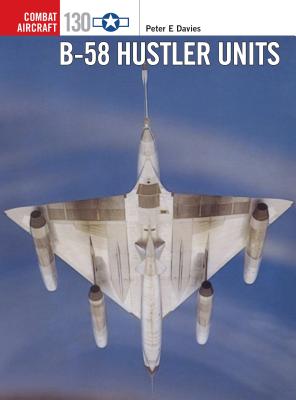One of the most dramatic bombers of its day, the Convair B-58 came to epitomise the Cold War power of Strategic Air Command. Introduced only 12 years after the sound barrier was first broken, this iconic plane became the first large long-range supersonic bomber to take to the skies, a feat which had seemed far-fetched only a few years previously. Outstripping its contemporaries in terms of speed, and agile enough to escape most interceptors, the B-58 was a remarkable feat of engineering, setting 19 world speed records and collecting a host of trophies. The first operational bomber capable of Mach 2 at 63,000 feet, it was able to evade hostile fighters and represented a serious threat to targets across the Soviet Bloc. Supported by contemporary first-hand accounts, photography, and full-colour illustrations, this study explores the history of this ground-breaking aircraft from its conception to its little-known testing for use in the Vietnam War.
One of the most dramatic bombers of its day, the Convair B-58 came to epitomise the Cold War power of Strategic Air Command. Introduced only 12 years after the sound barrier was first broken, this iconic plane became the first large long-range supersonic bomber to take to the skies, a feat which had seemed far-fetched only a few years previously. Outstripping its contemporaries in terms of speed, and agile enough to escape most interceptors, the B-58 was a remarkable feat of engineering, setting 19 world speed records and collecting a host of trophies. The first operational bomber capable of Mach 2 at 63,000 feet, it was able to evade hostile fighters and represented a serious threat to targets across the Soviet Bloc.
Supported by contemporary first-hand accounts, photography, and full-colour illustrations, this study explores the history of this ground-breaking aircraft from its conception to its little-known testing for use in the Vietnam War.
Get B-58 Hustler Units by at the best price and quality guranteed only at Werezi Africa largest book ecommerce store. The book was published by Bloomsbury Publishing PLC and it has pages. Enjoy Shopping Best Offers & Deals on books Online from Werezi - Receive at your doorstep - Fast Delivery - Secure mode of Payment
 Jacket, Women
Jacket, Women
 Woolend Jacket
Woolend Jacket
 Western denim
Western denim
 Mini Dresss
Mini Dresss
 Jacket, Women
Jacket, Women
 Woolend Jacket
Woolend Jacket
 Western denim
Western denim
 Mini Dresss
Mini Dresss
 Jacket, Women
Jacket, Women
 Woolend Jacket
Woolend Jacket
 Western denim
Western denim
 Mini Dresss
Mini Dresss
 Jacket, Women
Jacket, Women
 Woolend Jacket
Woolend Jacket
 Western denim
Western denim
 Mini Dresss
Mini Dresss
 Jacket, Women
Jacket, Women
 Woolend Jacket
Woolend Jacket
 Western denim
Western denim
 Mini Dresss
Mini Dresss






























































